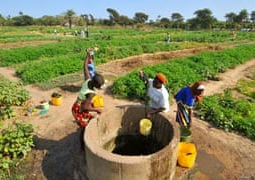
Involving young people in all aspects of youth programming and research can be viewed as an end in itself or as a means to an end.
Some organizations emphasize youth participation as a basic right.
If a program is designed to benefit young people, they should have input and involvement into how the program is developed and administered.
Others see youth participation as a means of helping to achieve program goals for youth or communities.
Youth participation can lead to outcomes such as improved knowledge, attitudes, skills, and behaviors.
Programs use many different strategies to involve youth.
In the past, youth participation generally meant peer education, youth advisory boards, and youth focus groups.
In recent years, organizations have made efforts to integrate youth into programming, including advocacy efforts, governance, and evaluation.
However, involving youth in meaningful activities can be challenging.
Organizations must consider issues regarding selection, recruitment, and retention of young people, whose needs, skill levels, and backgrounds will vary.
Also, the involvement of young people may require significant examination of organizational capacity and shifts in attitudes.
The International Youth Strategy by Amnesty International sets key directions for the period from 2017 to 2020 and provides a framework for implementation of youth work at the global, regional and national levels at all levels of the organization.
Through this International Youth Strategy, Amnesty International envisions that young people play active roles in creating a world where everybody enjoys human rights.
This research report documents the multiple benefits of meaningful youth participation and leadership in reproductive health and rights (RHR) programs.
It synthesizes global evidence from the field on how to foster authentic youth engagement, the impacts that result, and recommendations that can strengthen and scale this stream of programming investment.
The youth participants were aged 18-24-years old.
This toolkit is primarily for use by the SVRI but also can be used by other organisations seeking to ensure meaningful and ethical inclusion of the voices of young people at international research forums and consultations on sexual violence or on topics of a similar focus.
These may include conference and event organisers, researchers, academics, donors, government and non-governmental organisations.”
This toolkit is “a resource for SVRI and others working in the field wanting to ensure meaningful and ethical engagement of young people at conferences.
“To ensure that youth are actively engaged, programs should regularly assess youth involvement and engagement.
Meanwhile, expression is one of the leading causes of illness and disability among youth, and suicide is the second leading cause of death in people aged 15–19 years (2). Mental health conditions account for 16% of the global burden of disease and injury in people aged 10–19 years.
Half of all mental health disorders in adulthood start by age 14, but most cases are undetected and untreated.
Many factors have an impact on the well-being and mental health of adolescents.
Violence, poverty, stigma, exclusion, and living in humanitarian and fragile settings can increase the risk of developing mental health problems.
The consequences of not addressing adolescent mental health conditions extend to adulthood, impairing both physical and mental health and limiting opportunities to lead fulfilling lives as youths.
Building socioemotional skills in children and adolescents and providing them with psychosocial support in schools and other community settings can help promote good mental health.
Programmes to help strengthen the ties between adolescents and their families and improve quality of home environments are also important.
If problems arise, they should be detected and timely managed by competent and caring health workers.
Read Other Articles In Youth Forum

Hope for the better as Gambian youth take more interest in commerce
Aug 12, 2025, 10:53 AM




